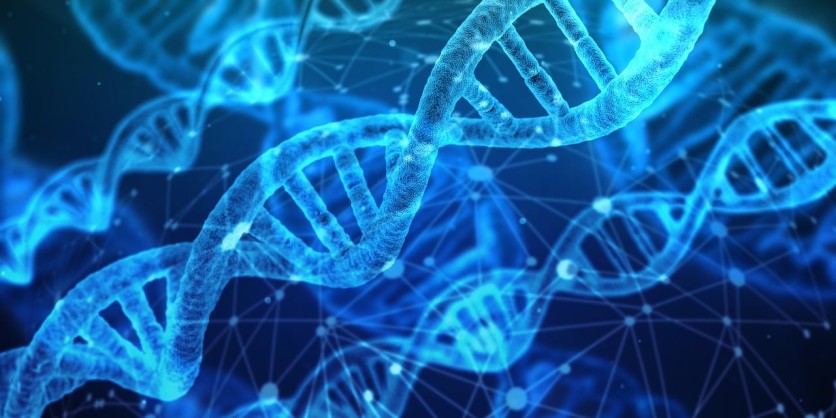Biohacking is an evolving practice that empowers individuals to improve their physical and mental performance through intentional lifestyle and biological changes. Rooted in self-experimentation, biohacking ranges from simple wellness habits to sophisticated technological interventions aimed at optimizing health, cognitive function, and longevity. It is increasingly popular, with a 2025 survey showing that 67% of Americans identify as biohackers, highlighting this approach's mainstream integration into wellness culture.
Types of Biohacking
Biohacking methods vary widely, encompassing:
- Nutrigenomics, which uses genetic information to tailor dietary choices for improved metabolism and disease prevention.
- DIY biology, involving personal health experiments such as intermittent fasting, sleep tracking, and mindfulness techniques.
- Grinder biohacking involves implanting technology like microchips for bodily enhancement. This extreme form remains experimental and largely unregulated.
These categories demonstrate biohacking's spectrum from accessible, everyday health tweaks to avant-garde human augmentation.
How Does Biohacking Work?
Biohacking operates on the principle of making incremental, personalized changes informed by data collection and analysis. Common practices include optimizing sleep quality, intermittent fasting, cold therapy, and using wearable devices to track physiological metrics.
The goal is to use measurable feedback to fine-tune habits, fostering gradual, evidence-based improvements in physical and cognitive health. This personalized approach enables users to discover what uniquely supports their well-being.
Is Biohacking Safe? Key Safe Practices
Biohacking wellness safe practices prioritize scientifically supported methods and caution against unproven or extreme approaches. Many biohacks, such as sleep improvement, regular exercise, hydration, and stress management, are generally safe for healthy individuals. However, safety concerns arise with supplements, unsupervised fasting, or invasive procedures. Experts advise:
- Consulting healthcare professionals prior to major changes.
- Relying on credible, research-backed sources.
- Avoiding hype-driven or extreme interventions like DIY genetic editing or invasive implants.
- Being wary of costly, experimental treatments without robust human trials.
- These guidelines help mitigate health risks associated with the DIY nature of biohacking.
Easy Biohacking Health Tips for Beginners
- Beginners are encouraged to start with simple, low-risk biohacks:
- Consistent high-quality sleep and stress reduction via meditation or mindfulness.
- Balanced nutrition centered on whole foods, tailored to genetic insights where available.
- Regular physical activity is suited to individual fitness.
- Moderate use of fitness trackers to monitor sleep, activity, and heart rate without obsession.
- Introducing one change at a time to assess efficacy and avoid overwhelm.
Integrating Biohacking into Daily Wellness Routine
Successful biohacking integration balances traditional wellness with modern data-driven insights. It involves combining foundational health behaviors —such as a balanced diet, exercise, and sufficient sleep —with technology, such as wearables, that provide actionable feedback.
Sustainable biohacking emphasizes gradual improvements and avoids dependency or obsession with data metrics. Importantly, biohacking should complement medical care, not replace it, with professional guidance ensuring safe and effective progress.
Scientific Advances and Biohacking Research in 2025
Recent scientific research underscores biohacking's emerging role in health optimization and disease management:
Studies in obesity medicine highlight biohacking's potential in personalized weight management through nutrigenomics, microbiome adjustments, and continuous glucose monitoring. These advances promote long-term behavioral change and may reduce healthcare disparities by providing accessible self-care tools.
Read more: How Nanotechnology Works: The Science Behind Advanced Materials, Medicine, and Manufacturing
Cognitive enhancement remains a prominent biohacking focus, with nootropics demonstrating varied but promising effects on memory, concentration, and productivity. While natural and synthetic compounds are explored, clinical evidence is mixed, making cautious self-experimentation advisable.
Sleep optimization is increasingly recognized as a powerful biohack. Research confirms sleep's critical role in hormone balance, immune health, cognitive function, and aging, motivating biohackers to adopt interventions that improve the sleep environment and schedule.
Genetic insights from DNA analysis enable personalized nutrition and preventative strategies aligned with individual risk profiles. This precision health approach moves beyond generic advice, aiming to optimize performance and minimize disease risk.
Despite enthusiasm, many biohacking interventions still lack large-scale human clinical trials and long-term safety data. Experts caution that cellular or animal studies are insufficient substitutes for rigorous testing required for widespread clinical adoption, underscoring the importance of evidence-based practice.
Risks and Ethical Considerations
Biohacking's rapid rise poses ethical and safety challenges. The DIY aspect can lead to unsupervised experimentation with potentially harmful consequences. Financial barriers to advanced biohacks could widen health disparities if access remains limited.
Moreover, privacy concerns arise with extensive personal data collection through wearables and genetic testing. Responsible biohacking involves transparency, informed consent, and balancing innovation with caution, particularly in areas like genetic modification or invasive procedures.
Biohacking represents a dynamic intersection of lifestyle science, technology, and personal wellness experimentation aimed at optimizing human health and performance. Its broad spectrum of techniques, from diet and sleep optimization to cutting-edge genetic insights, offers promising avenues for improved well-being and longevity.
However, safe biohacking wellness practices depend on evidence-based approaches, professional consultation, and prudent self-experimentation. By applying these principles and adopting practical biohacking health tips, individuals can responsibly harness biohacking's potential to enhance their health journey while minimizing risks.
Frequently Asked Questions
1. What role does community support play in successful biohacking?
Community networks, both online and offline, are crucial for sharing experiences, safety tips, and innovative methods. They provide motivation, collective knowledge, and a platform for discussing risks and benefits, which enhance safe biohacking practices and help avoid mistakes.
2. How affordable is biohacking, and can it be done on a budget?
Biohacking is adaptable to various budgets. Many effective biohacks involve low-cost or free practices such as mindfulness, sleep optimization, and diet adjustments. Affordable gadgets, such as basic sleep trackers or heart rate monitors, can support self-experimentation without a significant financial burden.
3. Are there gender-specific biohacking strategies?
Yes, biohacking can be tailored to gender-specific biological differences. Strategies might vary to address hormonal cycles in women or testosterone optimization in men, affecting nutrition, exercise, and lifestyle choices to maximize health benefits in a gender-aware manner.
4. What are the ethical considerations surrounding advanced biohacking, like genetic editing or implants?
Ethical concerns include safety risks from unregulated procedures, privacy implications from personal data collected via biohacking tech, and inequality due to high costs that limit access. Transparency, informed consent, and regulatory oversight are critical to advancing biohacking practices responsibly in society.
ⓒ 2025 TECHTIMES.com All rights reserved. Do not reproduce without permission.





